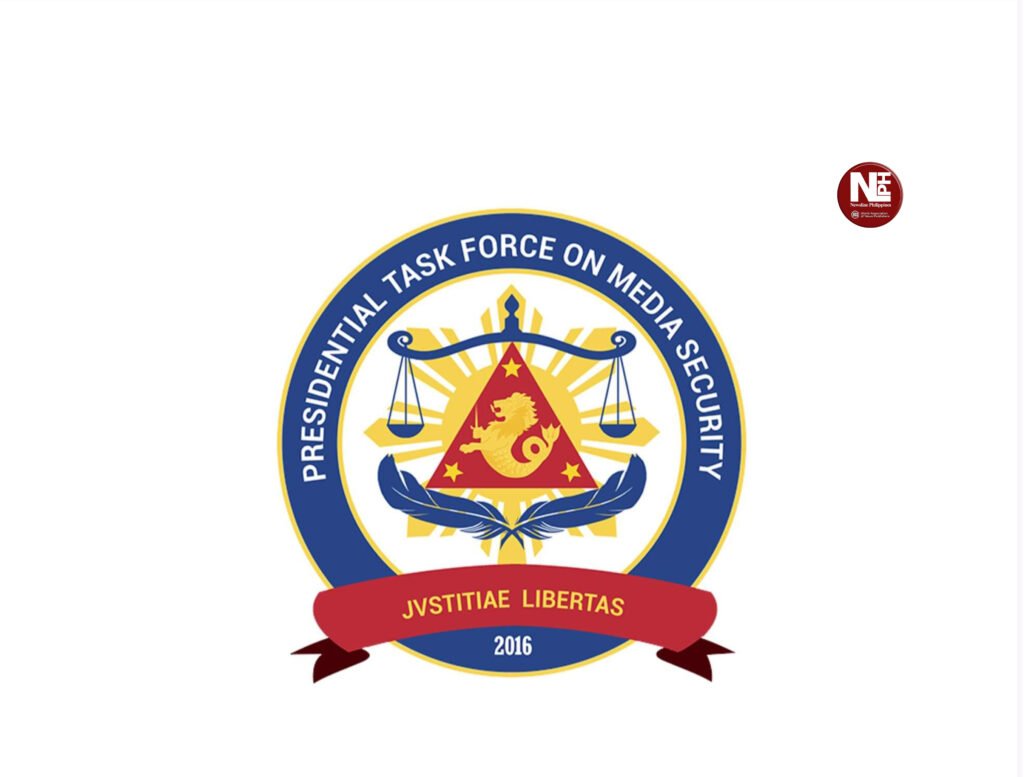
MANILA (September 23) – The Presidential Task Force on Media Security (PTFOMS) has condemned the harassment and violence reportedly experienced by journalists covering the nationwide protests on September 21, the 53rd anniversary of Martial Law.
Media practitioners reported cases of physical assault, intimidation, and obstruction while documenting the demonstrations, raising alarm among press freedom advocates. PTFOMS said these actions not only endangered journalists but also threatened the constitutional guarantee of press freedom.
“We strongly condemn these alleged instances of physical assault, intimidation, and obstruction targeting media practitioners,” PTFOMS said in a statement.
PTFOMS, Napolcom Back Probe
The task force said it is now coordinating with law enforcement agencies, including the Philippine National Police (PNP), to ensure a thorough and impartial investigation.
Commissioner Rafael Vicente R. Calinisan of the National Police Commission pledged the full support of his office for any probe conducted by PTFOMS. The task force vowed that any individual found guilty of harassing or attacking journalists will be “held fully accountable under the law.”
Watchdogs Raise Alarm
Media watchdogs were quick to respond, urging authorities to match words with concrete action.
The National Union of Journalists of the Philippines (NUJP) said the incidents reflect a continuing climate of hostility toward journalists, especially during politically charged events.
“The harassment of media workers during the September 21 protests is a painful reminder that journalists remain vulnerable on the frontlines. Authorities must ensure accountability, otherwise impunity will persist,” NUJP said.
The Center for Media Freedom and Responsibility (CMFR) likewise stressed that protecting journalists is essential to safeguarding democracy.
“The role of the press is never more crucial than during public demonstrations. Obstructing journalists from doing their work is not just an attack on the media but on the public’s right to know,” CMFR emphasized.
History Repeats? Journalists at the Crossfire
The September 21 protests—commemorating the declaration of Martial Law by the late dictator Ferdinand Marcos Sr.—highlighted the persistent risks faced by journalists in the Philippines.
Reports of journalists being manhandled by security forces, prevented from taking footage, or subjected to verbal abuse have surfaced during past rallies, with rights groups calling these cases part of a larger pattern of hostility toward the press.
Hotline for Media Workers
PTFOMS urged any journalist who experienced harassment to report the incident immediately. Complaints may be filed through the 24/7 hotline (0965 031 0377) or via the Incident Report Form on the official PTFOMS Facebook page: https://www.facebook.com/PTFoMS/.
Global Spotlight
International watchdogs have long warned that the Philippines remains one of the most dangerous places in the world to practice journalism.
The country consistently ranks in the Committee to Protect Journalists’ (CPJ) Global Impunity Index, which tracks countries where journalists are murdered and the killers go free. Meanwhile, Reporters Without Borders (RSF) in its 2024 World Press Freedom Index ranked the Philippines 134th out of 180 countries, citing the persistent threats, red-tagging, and violence faced by journalists.
RSF has described the Philippines as a country where the media landscape is vibrant but plagued by “structural impunity” for crimes against the press. CPJ, on the other hand, has repeatedly flagged the lack of accountability for journalist killings, including the 2009 Ampatuan Massacre that remains the single deadliest attack on media workers worldwide.
The September 21 incidents once again put the Philippines under the international spotlight, with watchdogs and rights advocates pressing authorities to prove that attacks on the press will not go unpunished.
For many journalists, the harassment during the protests was a stark reminder of the Martial Law years, when censorship, intimidation, and violence against the press were rampant—an echo that remains deeply unsettling in today’s democracy.

